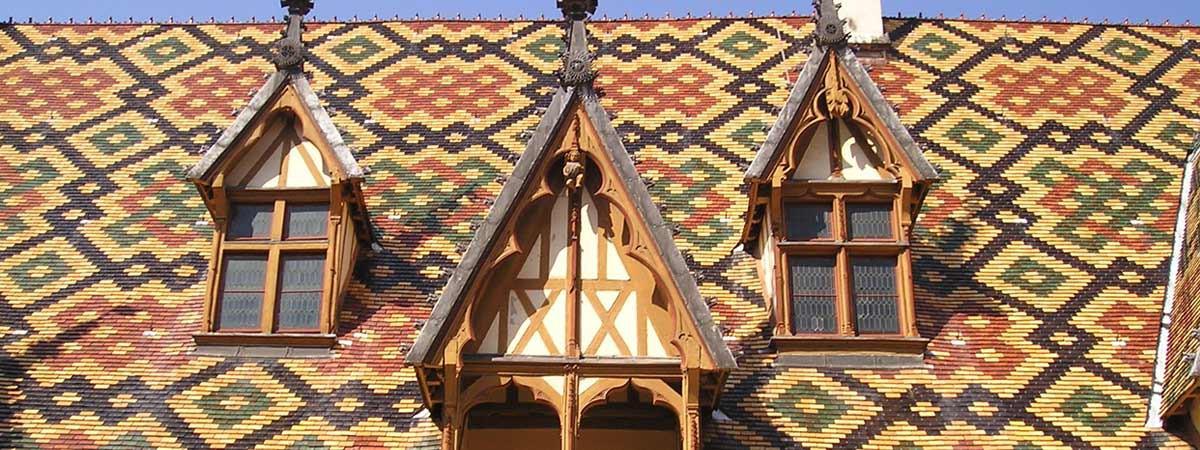The Burgundy region of France
Discovering Burgundy
Burgundy is one of the most fascinating regions in France. Often labelled as the "Land of Fine Art and Living," it is full of surprises and contrasts. It has a vast and varied landscape with wide fertile river beds, dense forests, granite hills, and limestone valleys.
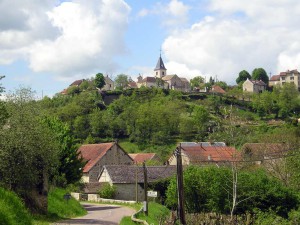
Day-to-day life is easy to enjoy and always at a snail's pace in a colourful landscape with rolling hills, lush pasture and oak forests. The secret is good food and good wine, with a dash of lush vegetation gently carved by winding country lanes in rolling hillsides. The ancient capital city Dijon is an absolute must to visit when you are in the area, with cobbled streets, half-timbered buildings and the Ducal Palace in the centre, there is much to see and explore.
Canal barge cruises
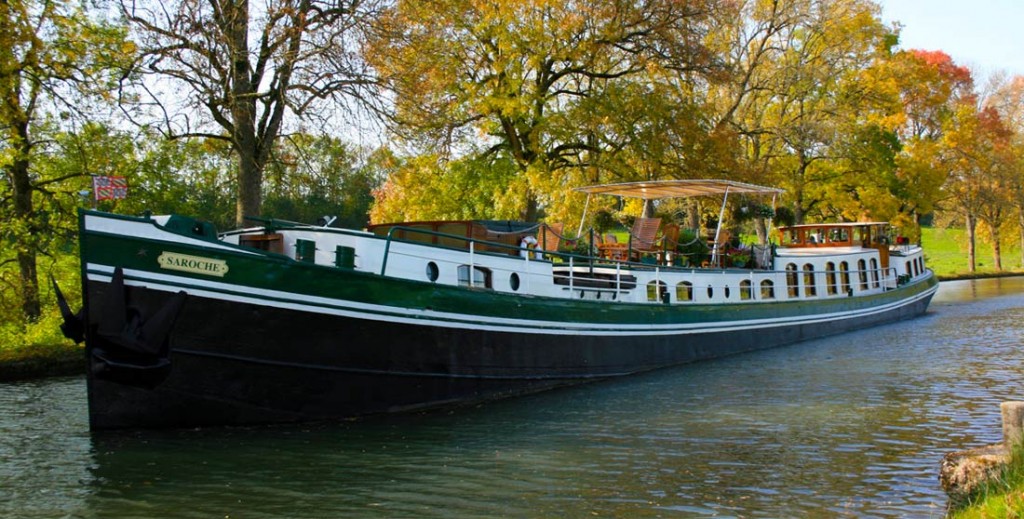
One of Burgundy's most important changes was the construction of the Burgundy Canal (Le Canal de Bourgogne). This dramatically changed the social evolution of hundreds of small villages and hamlets.
The canal is a masterpiece of pre-industrial revolution technology, spanning more than 250 kilometres in length. The canal struggles to span the region, slowly winding in smooth curves along the plains or rising steeply with a concentration of canal locks looking like a staircase before reaching the summit at Pouilly en Auxois. For almost two hundred years, the waters of this man-made canal have carried the weight of wooden or steel-hulled barges. The construction of the canal has changed the destiny of Burgundy, raising its status from a rural farming area to that of a great state with navigable waterways connecting the north of Europe to the Mediterranean Sea.
Canal cruises in Burgundy
Today the canal retains a small fleet of cargo-carrying barges, but its new purpose has changed to pleasure craft and holiday cruises onboard hotel barges and houseboat rentals.
Self-drive rental boats
Information about the rental boats (no skipper permits are required)
Hotel barges
Information about the hotel barges and crewed charters
Heritage and history
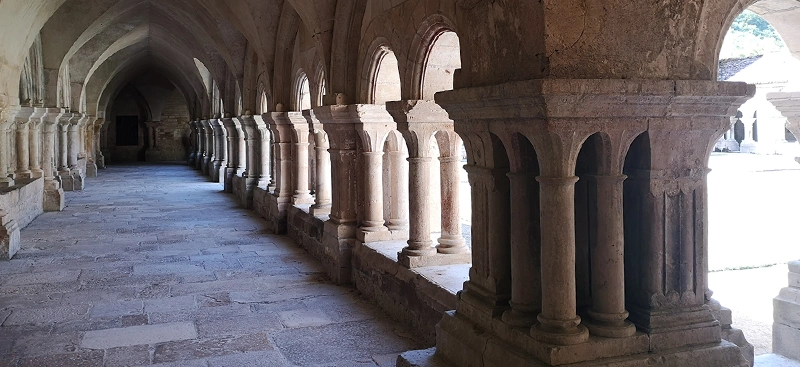
The Celtics, Romans, Cistercians and the powerful Burgundian Dukes sculpted the towns and villages through the centuries. The feudal rule was imposed for many years by the local lords. Burgundy's dukedom was once a large empire spreading through eastern France, into Germany, up to Belgium and the Flanders. Enemies of the French crown and allied with the English king, the succession of Dukes held a solid frontier, which eventually became a province with Louis XI. Finally, they entered the realm of France at the end of the 17th century.
The Catholic Church was a driving force of inspiration and energy, the construction of the Basilica Vezelay near Avallon, which was founded in 868 AD. The construction of the great abbeys of Cluny, Citeaux, Fontenay and La Bussiere by the Benedictine and Cistercian orders placed Burgundy on the map of Western Europe. The architecture retains many styles from the Roman, Gothic and Renaissance periods, such as the castles of Ancy-le-Franc and Tanlay or the fortified castle of Chateauneuf en Auxois.
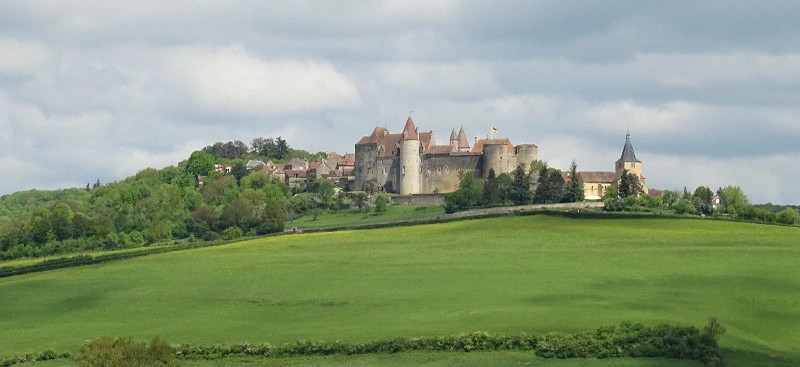
The traditional coloured tiles used on the roofs can be seen in many places, and that of the Hospices de Beaune is a highlight when visiting Burgundy's old capital. The coloured tiles originate from Eastern Europe and have remained a tradition in Burgundy. Even in small villages, you'll see examples of glazed roofs breaking the skyline, appealing and relaxing to the eye.
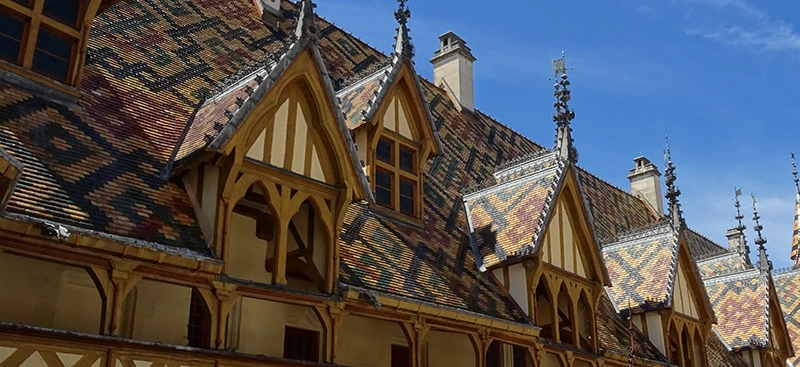
Regional flavours and the cuisine
As the area is a historical crossroads from the north of Europe and southwards towards Italy and the Mediterranean coasts, the region has inherited influences from many other cultures and regions. The ancient trade routes along the Rhône and Saone river valleys have been travelled throughout the centuries, bringing spices and ingredients that are used in the local cuisine. The traditional cuisine is rich and tasty, which can be enjoyed at a very affordable price in many of the small traditional restaurants in villages and towns. The gastronomic restaurants with the highest standards and star ratings can be found in all the corners of Burgundy.
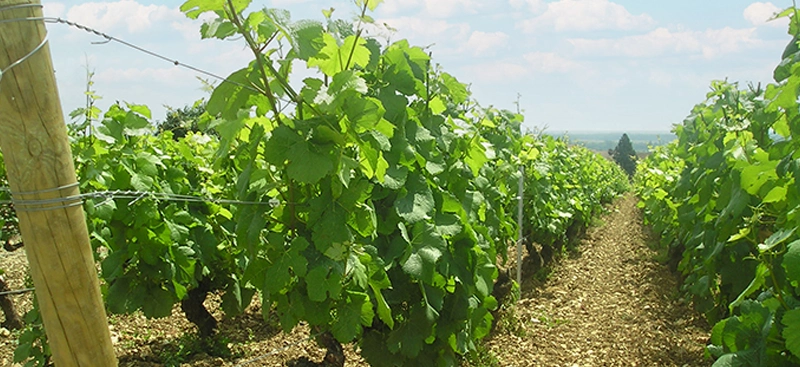
The Romans introduced wines as they progressed northwards along the Rhone Valley and then mastered by the monks at Nuits Saint George, creating famous names like Volany, Pommard, Gevery-Chambertin and Aloxe-Corton, now known worldwide. The vineyards spread southwards for miles on the slopes of the hills, with many producers still using the traditional methods, such as oak barrels and years of ageing in the coolness of vaulted cellars, to give us some of the greatest Crus. As you travel south through the region, you will pass through the wine-growing areas of Chablis, Cote de Beaune, Cote de Nuits, Chalonais and Maçonais before arriving in the Beaujolais. There is a concentration of Pinot Noir and Chardonnay grapes in the vineyards, but also lesser well-known names, such as the Aligoté white used in the famous Kir, served as a refreshing aperitif.
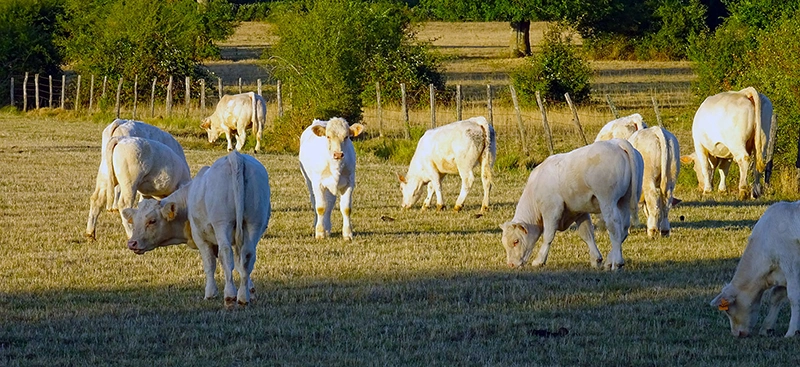
The local cheese varieties are abundant in all shapes, sizes and colours, strong such as the Epoisse or mild and fresh. To be tasted with fresh bread and some of the famous red or white wines. The white Charolais cattle, which can be seen in the green pastures on the hill slopes, are bred to give a remarkable quality of beef, which provides us with one of Burgundy's most well-known dishes, the Boeuf Bourguignon. Markets and fresh local products are plentiful and cultivated in the fertile river plains of the Saone.
Mustards, Cassis, and even Gingerbread are other secret ingredients for refined cuisine. The art of a gourmet table requires talent and experience, which you can find in some of the world's finest restaurants, such as Bernard Loiseau in Saulieu, the La Côte Saint Jacques in Joigny, and Maison Lameloise in Chagny.
